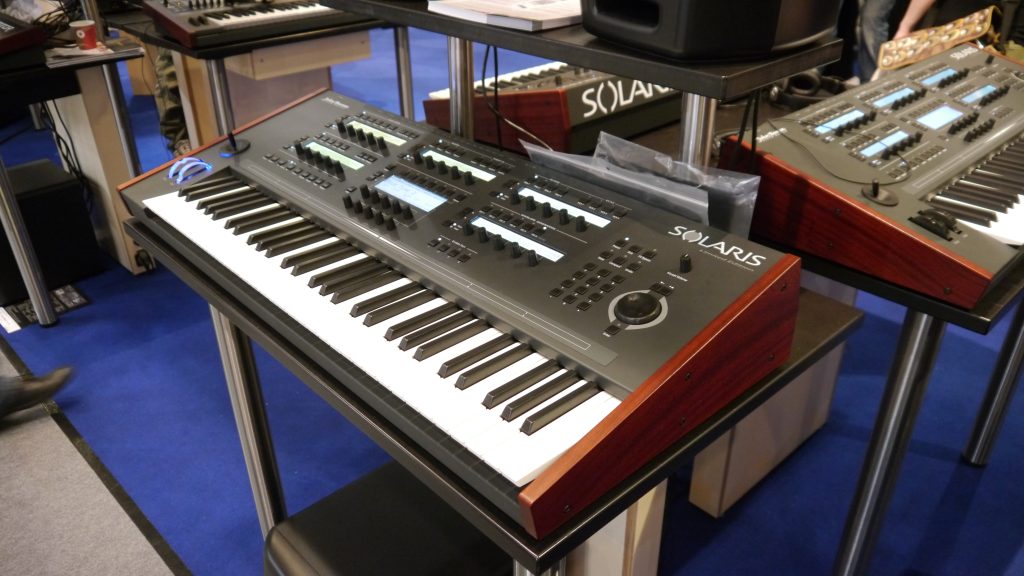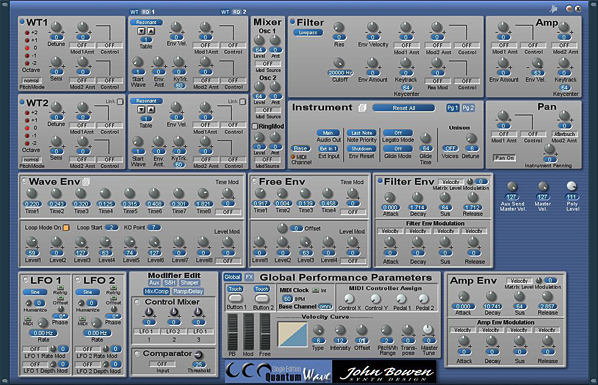John Scott Bowen started out as the first official Moog clinician in 1973, demonstrating and contributing to designs for Moog Music. In 1976 he met Dave Smith, and started working with Dave to promote his Model 800 sequencer, and then helped specify the Model 700 Programmer. This association led to development of the Prophet 5, and then on to the entire line of Sequential Circuits products. John was responsible for the original 40 factory programs of the Prophet 5, the world’s first programmable polyphonic synthesizer, making him the ‘Father of factory preset/sound developers’, and as Sequential’s Product Specialist created 99% of all of the factory sounds and sequences (as well as most of the original Prophet VS waveshapes), also contributing to the User Interface (UI) design for the following Sequential products: Prophet 5, Prophet 10, Prophet 600, Prophet T-8, Prophet VS, Drumtraks, 6-Trak, MultiTrak, Tom, Max, Studio 440, and the Prophet 2000 and 3000 libraries.
About John Bowen


Also during this time, John was bassist and synthesist for the Nielsen-Pearson band (1974-1980), performing on 3 albums with them. A review of a CD which combining the second and third albums can be found here (and for fans of West Coast music, can be purchased on Amazon.com). He also assisted Billy Cobham in setting up his Moog Modular 55 for various recording sessions (featured on ‘Inner Conflicts’ and on Stanley Clark’s ‘School Days’), as well as appearing on several other projects, most notably with Herbie Hancock for the Eddie Henderson release, ‘Mahal’.
At the end of 1987, Sequential was bought by Yamaha. After a brief stint there, the Sequential design team moved over to Korg, where John was product manager for the Wavestation series (keyboard, AD, and SR racks, 1989-1992). In 1993 he became part of the original OASYS keyboard project team, culminating with the first public presentations of the OASYS keyboard at NAMM and Musik Messe in early ’96. After cancellation of the project in Sept. ’96, John took part in the Korg Z1 voicing. A year later, with the go-ahead from Korg Japan to resurrect the OASYS technology, he found himself back doing UI design for OASYS PCI synths and effects.
In August ’98 John joined Creamware to develop the Modular system used in Pulsar/Scope, as well as assisting in some of their other synth design projects. Working as an independent since Fall ’99, he created more than a dozen synthesizer plug-ins for the Scope/Pulsar DSP platform that were known for their ease-of-use and sonic quality, including complete extremely accurate representations of the Pro One and Prophet 5, alongside with his flagship synth plug-in, the original Solaris ™.
Since 2007, he has been working with Sonic Core engineering to produce his idea of an extremely flexible and capable hardware synthesizer, called the Solaris, which has been widely praised and used by numerous film and TV composers, as well as synthesizer enthusiasts.
He feels his other contributions in synth concepts include the Prophet 5’s Poly Mod section and the term “Multitimbre”. However, he feels his most important contributions to the world are his sons!

QUOTES:
Hans Zimmer
Hans Zimmer is one of the most successful and influential film composers in Hollywood. Here’s what he has to say:
 “If anyone out there can take what we love about the elusive quality of analogue synthesizers and add the inventiveness and versatility that we get from digital, it’ll be John. There is no question in my mind he understands that fundamentally the sound has to be true and uncompromised for a bunch of circuits to turn into a musical instrument. There are many synths out there that are fun and even inspiring. But it takes a certain magic and voodoo, a certain set of ears and sonic heart to build something lasting, something timeless.”
“If anyone out there can take what we love about the elusive quality of analogue synthesizers and add the inventiveness and versatility that we get from digital, it’ll be John. There is no question in my mind he understands that fundamentally the sound has to be true and uncompromised for a bunch of circuits to turn into a musical instrument. There are many synths out there that are fun and even inspiring. But it takes a certain magic and voodoo, a certain set of ears and sonic heart to build something lasting, something timeless.”

